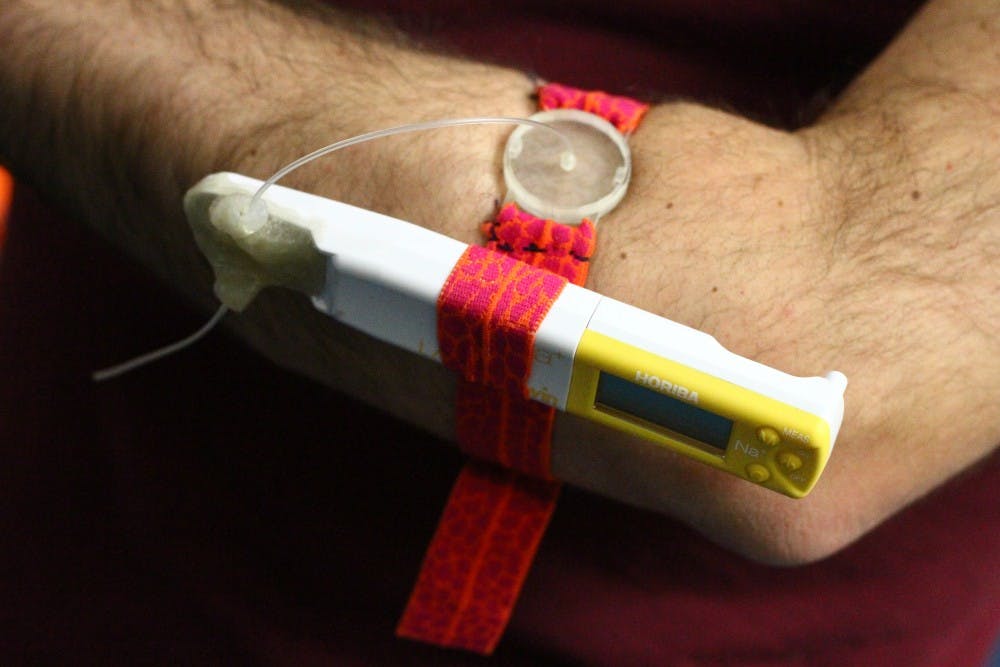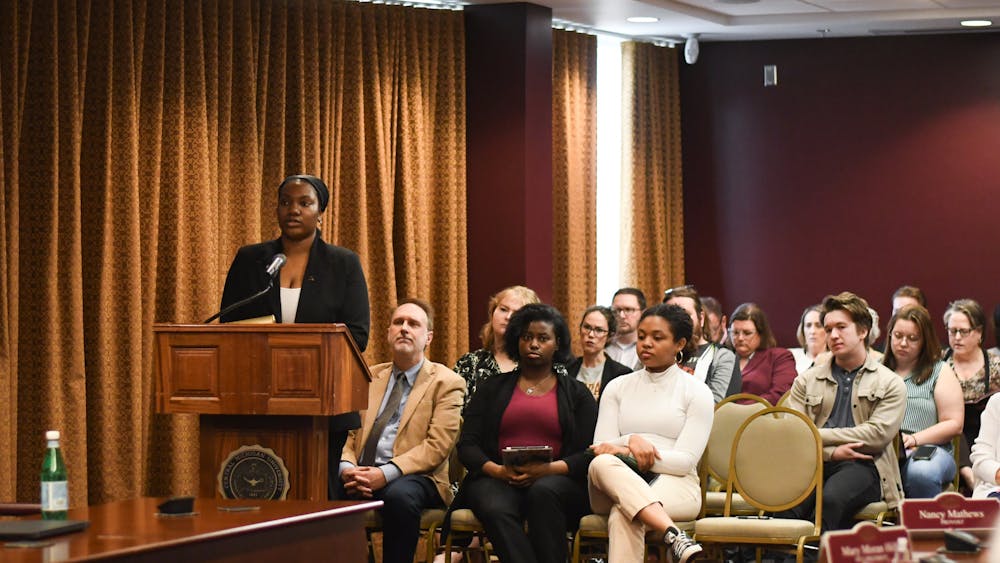Building a future from sweat

Tolga Kaya is in the process of inventing a sensor that can measure the wearer’s hydration levels by judging the amount of salt in their sweat.
“When people don’t have enough water in their system, they are dehydrated,” said Kaya, an Assistant Professor in electrical engineering, said. “(That) particularly affects athletes and soldiers because they cannot perform well and they cannot think very well, so that could be fatal for a lot of people.”
Central Michigan University senior, Gengchen Liu, is one of six students helping Kaya with his sweat sensor research.
If the team meets its goals, coaches and commanders would be able to monitor the hydration levels of athletes and soldiers with their cellphones. The project has already won CMU’s New Venture Competition in 2014 and is in the running for a state-wide New Venture Competition in March.
The team's goal is to assemble a functioning device that's the size a wrist watch by March, but the finished product is envisioned to be more like a Band-Aid—small and tight against the skin.
“Right now it’s not that easy to use, you have to make it very tight on your arm,” Lui said. “If it’s not tight, the sweat will not go up. If it’s tight enough, the sweat can only go up in the tube.”
Inspiration for the sweat sensor came to Kaya as he was working on other biological sensors. Soldiers and athletes he was in contact with showed him the need for a device that can measure hydration levels faster than current methods.
"Currently the main way to do that is to draw and analyze the blood. It takes forever, and we cannot do it in harsh conditions," Kaya said. "That’s why we began thinking, and we said 'how about using other fluids?'.”
Research into engineering a sensor that uses sweat to do the job has never been attempted before, according to Kaya. He thinks the chance to be part of something new is partially what attracted students like Liu and five other assistants to the research.
“I think this research was most helpful to me because I can feel the outcome,” Liu said. “I can see that my teammates work really hard to move it forward compared to other groups…I can see the direct application.”
The students working with Kaya pitched the idea for the New Venture Competition at CMU and won, earning $500 and a chance to compete on a grander scale this March. The winner of that competition will get $30,000 to start a company.
Kaya is very proud of his team and what they have accomplished together, and said he would not have gotten this far without them.
“It’s a small, empty field that people have not explored yet,” Kaya said. “We decided to dive in there and be a little bit adventurous and it looks like it’s paying off very well.”




